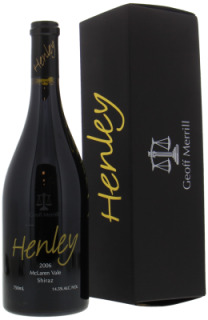Chateau Musar 2004
| Classificatie | Cru Classe |
| Wijnsoort | Rood |
| Producent | Chateau Musar |
| Jaar | 2004 |
| Land | Libanon |
| Streek | Bekaa Vallei |
| Druif | Cabernet Sauvignon, Cinsault |
| Alcohol % | 14% |
| Inhoud | 0,75 |
| Conditie | Perfect |
| Etiket | Licht gevlekt |
| Drinkbaar | -2032 |
| Voorraad | 0 |
Professionele reviews
James Suckling (87)
A traditional wine from Lebanon with earth, wet-wool and dried-plum character. Musty. Full body, soft tannins and a straightforward finish. Funky.
Jancis Robinson (16)
Approximately 33% Cab Sauvignon, 33% Carignan and 33% Cinsault from 30- to 50-year-old bushvines planted near three villages in the foothills of Mount Lebanon at an altitude of 900-1,050 m. Stony soils with gravel and silt over limestone. The grapes were hand-harvested in Septemberwith a yield of just 20-30 hl/ha. The viticulture is certified organic by an Italian body, IMC. Fermented with natural yeast for 7-10 days, followed by skin maceration of up to four weeks. The new wine was then aged for nine months in cement tanks followed by 12 months in French Nevers oak barrels and then another nine months in cement tanks. No fining nor filtering, just bottled in its third year and released after a total of seven years. TA 5.89 g/l, pH 3.65, RS < 2.0 g/l.
Quite evolved muddy ruby colour. Funky and rich on the nose. Sweet and gamey, even a little furry, but lots of fun – provided you’re not a member of the brett police.
Robert Parker (91)
The 2004 Chateau Musar is an equal blend of Cabernet Sauvignon, Carignan and Cinsault. This is a rather civilized, laid back Musar. The complicated aging process is best described by the winery: “The wines spent nine months in cement vats and then a year in French Nevers oak barrels and the final blend of Cabernet Sauvignon, Cinsault and Carignan rested for another nine months in vats before being bottled?“ The winery describes this as a once-in-a-decade vintage where a heat wave caused notable increases in sugar content in a short time. I sometimes find that is a dangerous description of vineyard conditions with many risks for a winery, but it seems to have turned out well. If you’re comparing, it adds two layers of depth to the 2007 Hochar, although it is quite elegant and graceful in its own right. Most importantly, it has more of an obvious backbone even though it is late-released. Its balance, combining the nice fruit, elegant mid-palate, persistent finish and backbone, gives it a tightly wound, precise and focused demeanor. The tannins are not completely integrated, but not overly hard. They provided some welcome grip and vibrancy and never overwhelmed the wine. In the long run, they should serve this wine in good stead. Overall, it is an exceptionally graceful, somewhat modern and restrained Musar, bright, with that silky texture I saw in the Hochar reviewed this issue, while adding those layers of concentration. The cherry on top is the intensity of fruit flavor – bursts of delicious and juicy fruit on the finish, admittedly nuanced by some of the gamey notes I see here so often. Call it raspberry flavored, though, because the fruit is delicious. The gamey notes were in fact moderate and, at least for my taste, not an issue. As this rather subtle Musar aired out, I liked it more and more. I’ve had Musars that were bigger, burlier, more rustic and more astringent. Here, the subtle start was unremarkable, but it gathered steam, showed remarkable finesse and then won me over. This will certainly do better with food.















